One Question You Must Ask Yourself
Facebook and Instagram are full of nice wildlife photos.
It's harsh, but no one will care if you take similar pics as everybody else.
Instead of whining about it, I see this as a great opportunity to improve your photography.
And the only way to improve, is to be more creative, and take photos that are different, which can evoke emotion in you and the others.
It's very easy to be different, but very difficult to be better.
-Jonathan Ive
To be different is easy, you can take some blurry shots or turn the image into blue.
But to be better while being different is difficult.
If you are familiar with the history of visual art, you should know about the evolution of abstraction. From the book “Art fundamentals: Theory and Practice” (expensive book ;), it said the evolution always goes like this:
- Naturalism: Fully representational with specific details (very objective)
- Realism: Representational but emphasizes the emotional essence (more subjective)
- Semi-abstraction: Partly representational but simplified and rearranged
- Full abstraction: Based on a physical object but simplified and rearranged so that it appears nonobjective; to completely nonrepresentational that started without any reference to a physical object.
The more subjective, the more self-expression we have on that photo we create.
For beginners, we always stuck at the naturalism stage, trying to get a sharp shot of an animal. “Nailed it” is the mantra. As long as the background is not too distracting, we consider it a job well done.
But then, the photo would just be documentary.
To express our feeling in a photo, it needs to be less objective and have a higher degree of abstraction. In another word, abstraction is closely related to creativity.
So how do we begin?
I actually have a solution for you—ONE QUESTION to ask yourself that can really help your photography instantly. It definitely helped me.
All you have to do, is to call this phone number within the next five minutes…
Shoot, did I just sound like an infomercial dude?
But really, before I tell you what this question is, I want to share with you two things which I have been pondering about.
1: Don't Do Evil
Instead of investing time to wait for a moment, and be more creative in planning a shot, some turn to the dark side and bait the animal.
Few days ago, Wildlife Photographer of the Year posted a picture of a bear appearing from the forest at the edge of a river with a nice reflection.
The mood of the picture was perfect, with beautiful composition. Yet when you read the description, it said that the photographers have put dog food on the opposite side of the river to attract the bear.
If you think this is not right, you are not alone.
Hundreds of people have shared their views in this thread right here. Definitely take a look and leave your comment there.
Interestingly, I was listening to a podcast by photographer Gerry van der Walt, recommended to me by my friend Trent Sizemore. On episode 60:
https://itunes.apple.com/us/podcast/episode-60-q-a/id1202658350?i=1000390231460&mt=2
Go to the 4-minute mark and listen to it when he talked about how he felt when photographers use robot car and drones to get close to animals to get wide angle shots.
I like what he said: Changing the animal behavior to get a shot is just wrong.
I have written a blog post some time ago that got quite a lot of response. In it, I quoted:
"In my view, the "wow" factor of photography - its power to delight and even astonish - is directly tied to its being perceived an honest record of a real event. Without that, a picture is just an illustration, and truth is irrelevant."
–Kevin Schafer in Penguin Planet
So, to me, no matter how different you aspire to be, you MUST NEVER try to change the behavior of the animal for the sake of a photo.
2: The One Question That Rules It All
So how do we take a picture that’s different and can evoke emotion?
One time I was on a trip with good friend Henrik. We were photographing the same animal from two different spots, about 30 feet apart.
“Hey, Tin Man, come here. Let me show you something,” he whispered as he waved at me. His eyes filled with excitement.
I hesitated.
"Dude, the light is behind me. You are in the wrong angle. The animal is side-lit at your spot, and it ain't gonna look good as the light is not saturated enough to do side-lit shot yet," I thought. (Sorry, Henrik :D)
But seeing his big grin, and looking at the sequence of photos I was taking at the moment, which was nothing special, I thought, why not?
I slowly and quietly low-crawled to his spot in the mud.
Ouch, my back.
Finally I laid down on my belly right next to him, taking a breather, and looked through my viewfinder through my partially fogged up eye glasses.
Holy shit!
I immediately wiped my glasses to take a closer look.
The color and feel of what I was looking at thru the viewfinder were mind-blowing, and much better than what I got from my original spot.
I totally didn’t see this color and composition before.
What about the light angle? You asked.
Well, what I didn't expect, was that there were some scattered clouds near the direction of the sun. With the strong wind, we got some short windows from time to time when these thin clouds were blocking the sun, creating a diffused softbox effect, and the shots would be perfect in those moments with an out-of-the-world background, even though the light angle was "off".
Henrik was gambling on that, instead of going to the usual path like some boring dudes (me). And he won big.
I frantically took hundreds of photos, and I thanked him. Almost gave him a hug actually.
After the trip, I reviewed the photos and thought about this particular encounter with Henrik.
True. I really liked the photos I took alongside him. But he’s the first one to see that angle and composition, and I should give him credit for that.
To me, he used his creativity to find this spot. I was a follower who tagged along.
You all remember the iconic wildlife shots like the salmon flying straight to the mouth of a bear in a waterfall.
Many of us strive to repeat those shots.
It’s no doubt a good opportunity to practice by repeating these great shots first. But in the end, there is zero creativity there. There's nothing personal about your inner feeling there. We are merely repeating something these pioneers and grand-masters have done.
Instead, we should try to build on this, and create something more unique and personal.
These days, whenever I looked through my old photos, I would ask myself one simple question:
If 5 people went to this same location and were given this opportunity, will my photo look the same as theirs?
Would they be using the same light angle, composition, crop, color rendition, depth of field, perspective, moment, etc? Was I seeing something they didn't see?
Let me elaborate with the following three photos.
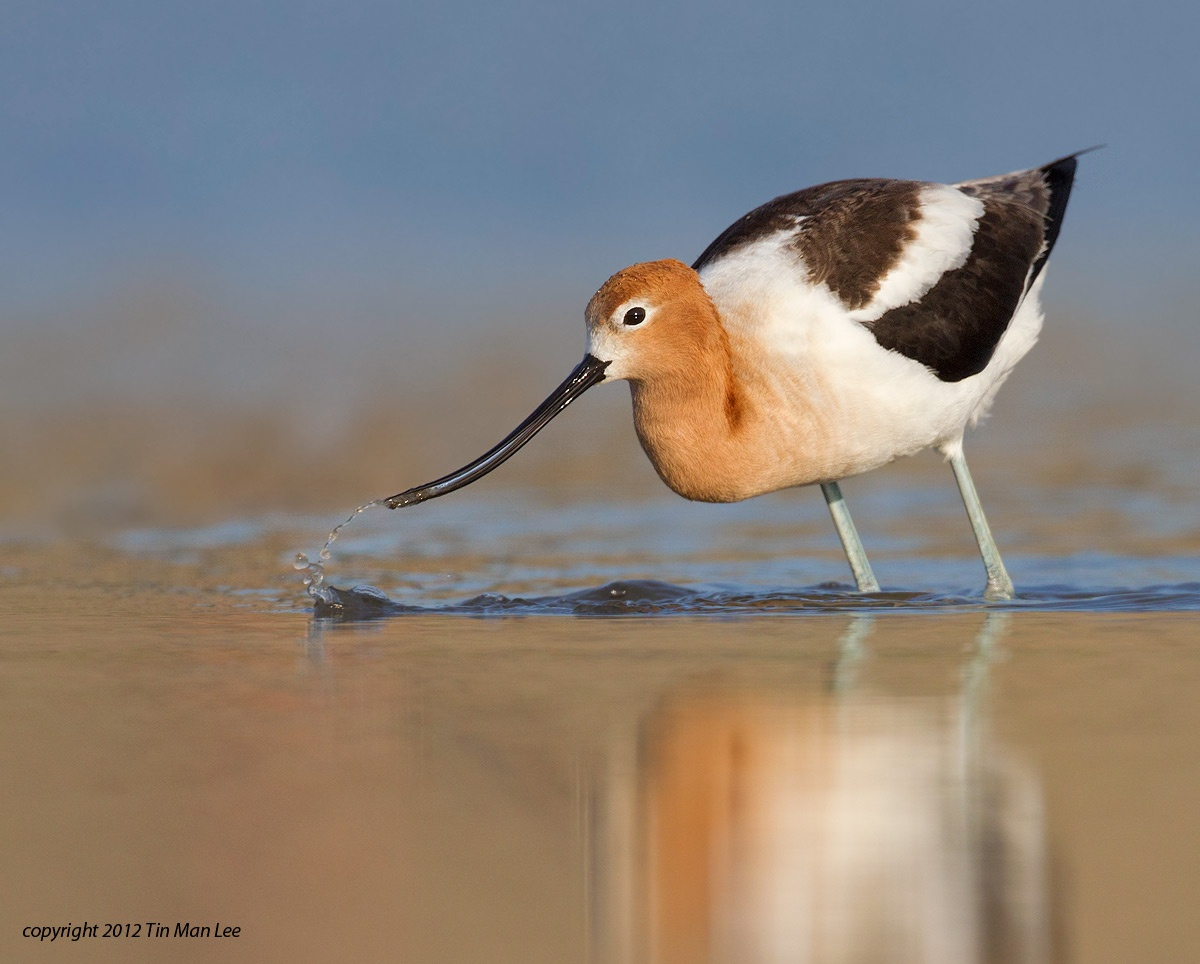
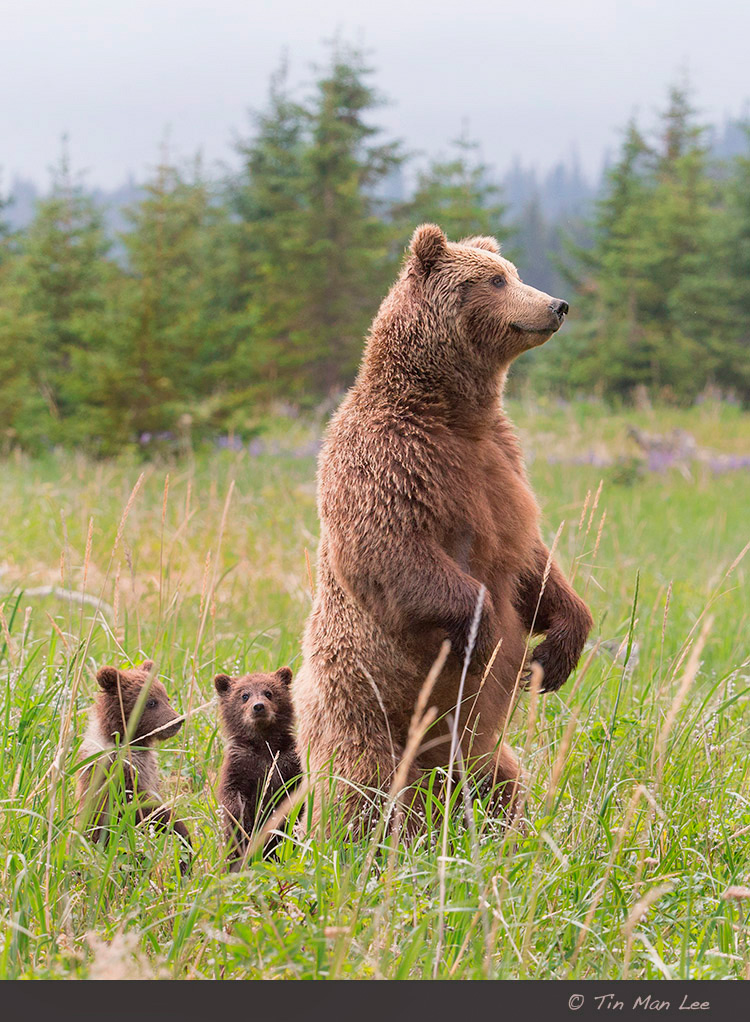
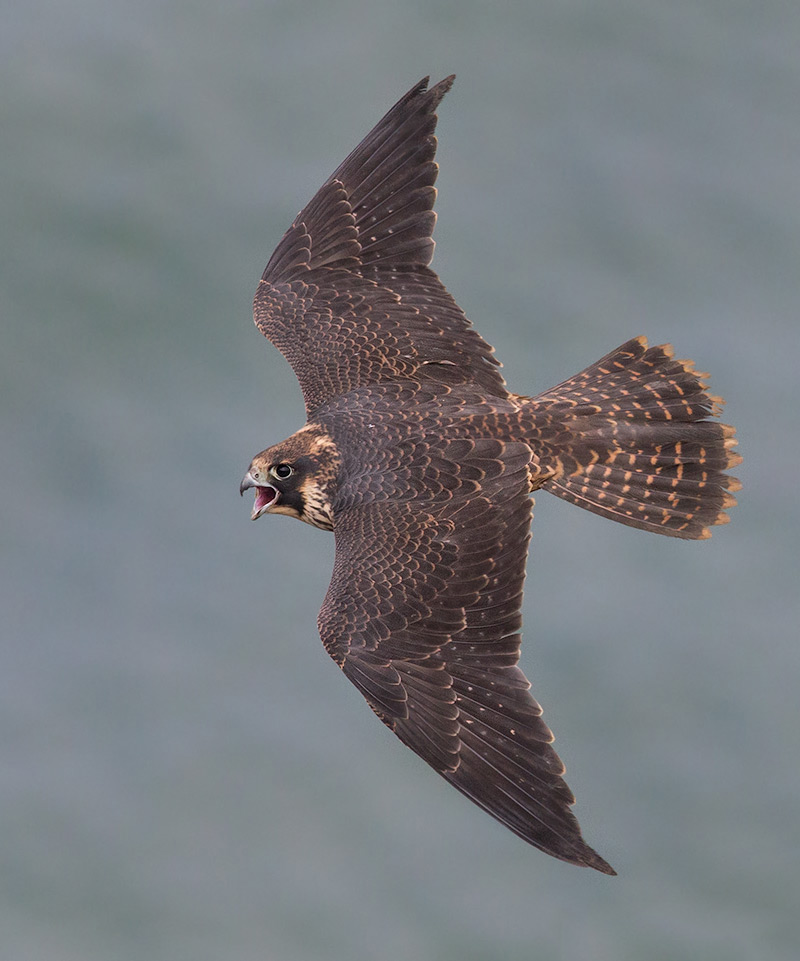
As much as I like these three photos, especially the second one with the bear family all standing with their hind legs, to capture those shots successfully or not, it's all a matter of technical skills. Any photographer who has good action photography skill, basic understanding of light, exposure and composition, given the same sighting, would have nailed the shot.
Capturing the decisive moment? Yes. Creativity? Not so much. (Except the very first photographers who had the courage and idea to take these before everybody else.)
The key of my question is therefore to distinguish how much of a personal touch and creativity you have instilled into your shot, compared to a grab shot like everybody else.
In a more superficial sense, when you create shots with more abstraction, personal touch and creativity, the shots may still not be the most original, but viewers will instantly recognize it's your work when they see the same photo the second time. While on the other hand, when they see the above three photos, they may not be able to tell which photographer took those, because they are dime a dozen.
Well, I don't know about you, but most of my photos didn't pass this test.
In the last two years, however, I was more aware of this, and have been trying to push myself. Here are a few that passed that test.
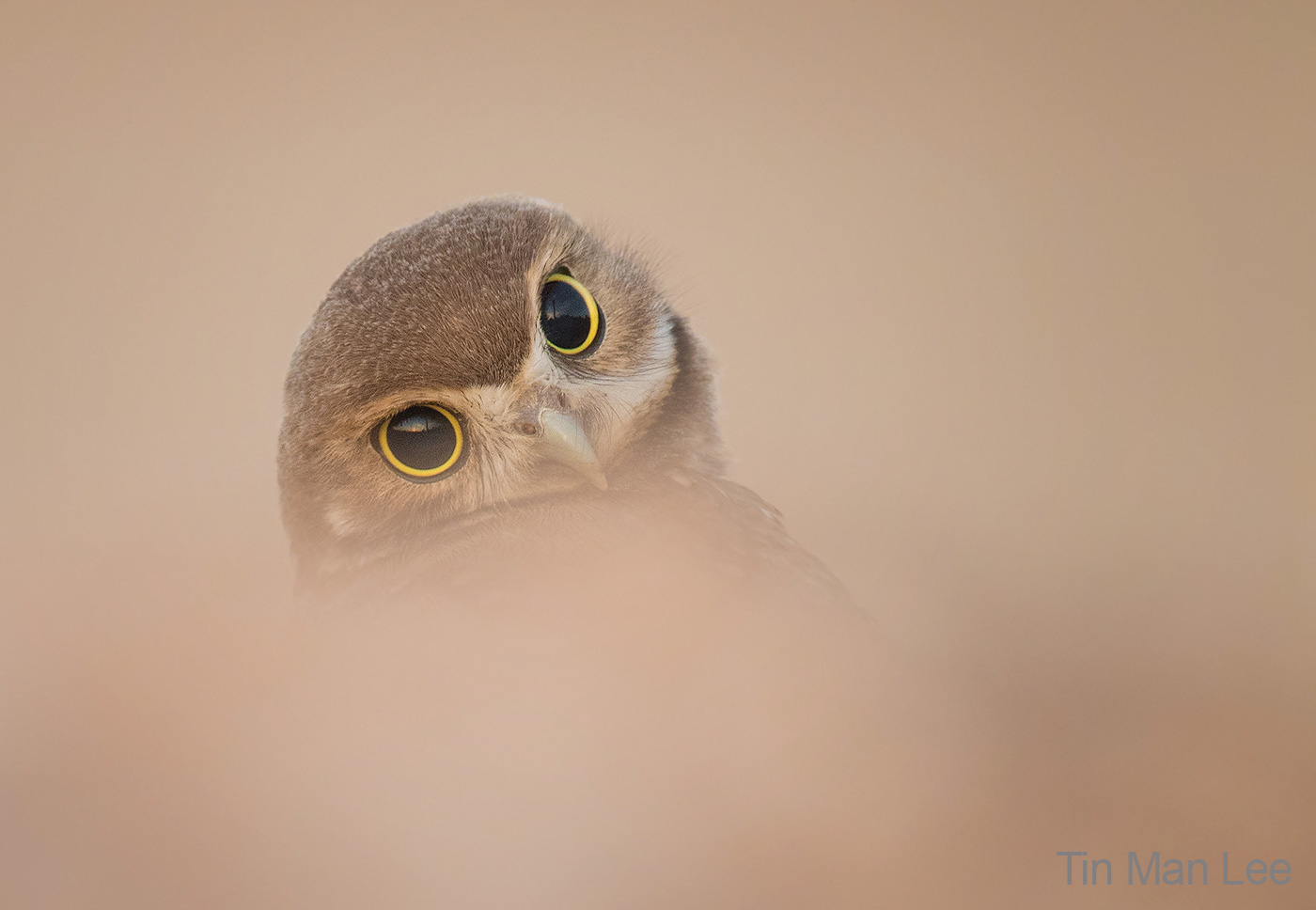
Instead of trying to get the whole burrowing owl in focus, I wanted to get rid of all the distraction except the head, so that the viewers' eyes would be drawn to the owlet's eyes-- the most interesting part of the image, especially during extreme low light when their pupils dilate. So the whole time I was looking for a clean foreground and background, while waiting for the moment when his head tilted, creating a sense of curiosity. Canon 1DX Mark II, Canon 600mm f/4, 1.4x teleconverter, 1/500s, f/5.6, ISO 3200
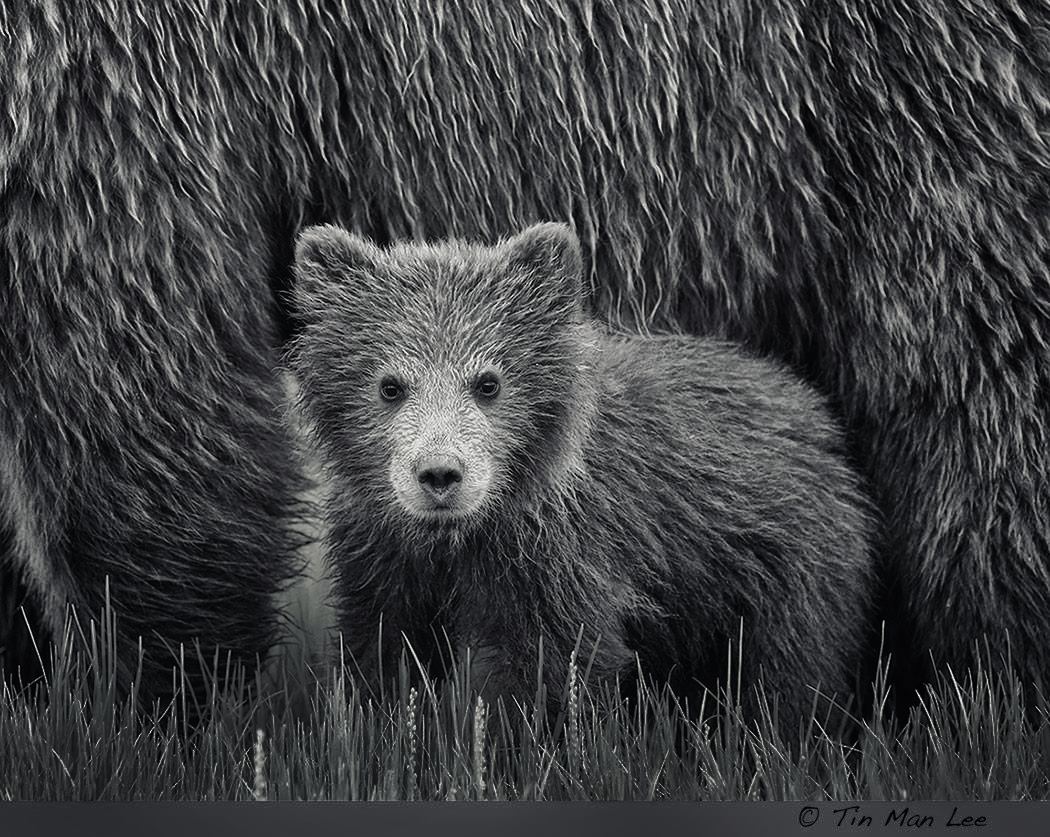
Being able to recognize the lines and patterns in nature is important. I saw my opportunity when this brown bear spring cub was hiding under the belly of the mother bear, as if he's within a hut. I knew (well not really) the fur would create the white/black contrast if turned into B&W, and the pattern among the mother bear, the cub, and the grass will create an interesting design. I took the picture. But it took me 4 years of revisiting this picture to see the potential of black and white. Canon 1DX, Canon 500mm f/4, 1.4x Teleconverter, f/8, 1/800s, ISO 1600

It only took me 4 years to see a great horned owlet on the ground after my original encounter. This time, the wild flower in California was blooming. To convey the mystery feeling, I waited behind a spot where the wild flowers were blocking my view. All I need was the moment when the wind blew, and created a small window of opening, at the right time when the light was the most saturated to turn the yellow flowers to golden, to compliment the cold blue background and the color of the eyes. The whole time I was thinking about a poem "那人卻在, 燈火闌珊處"
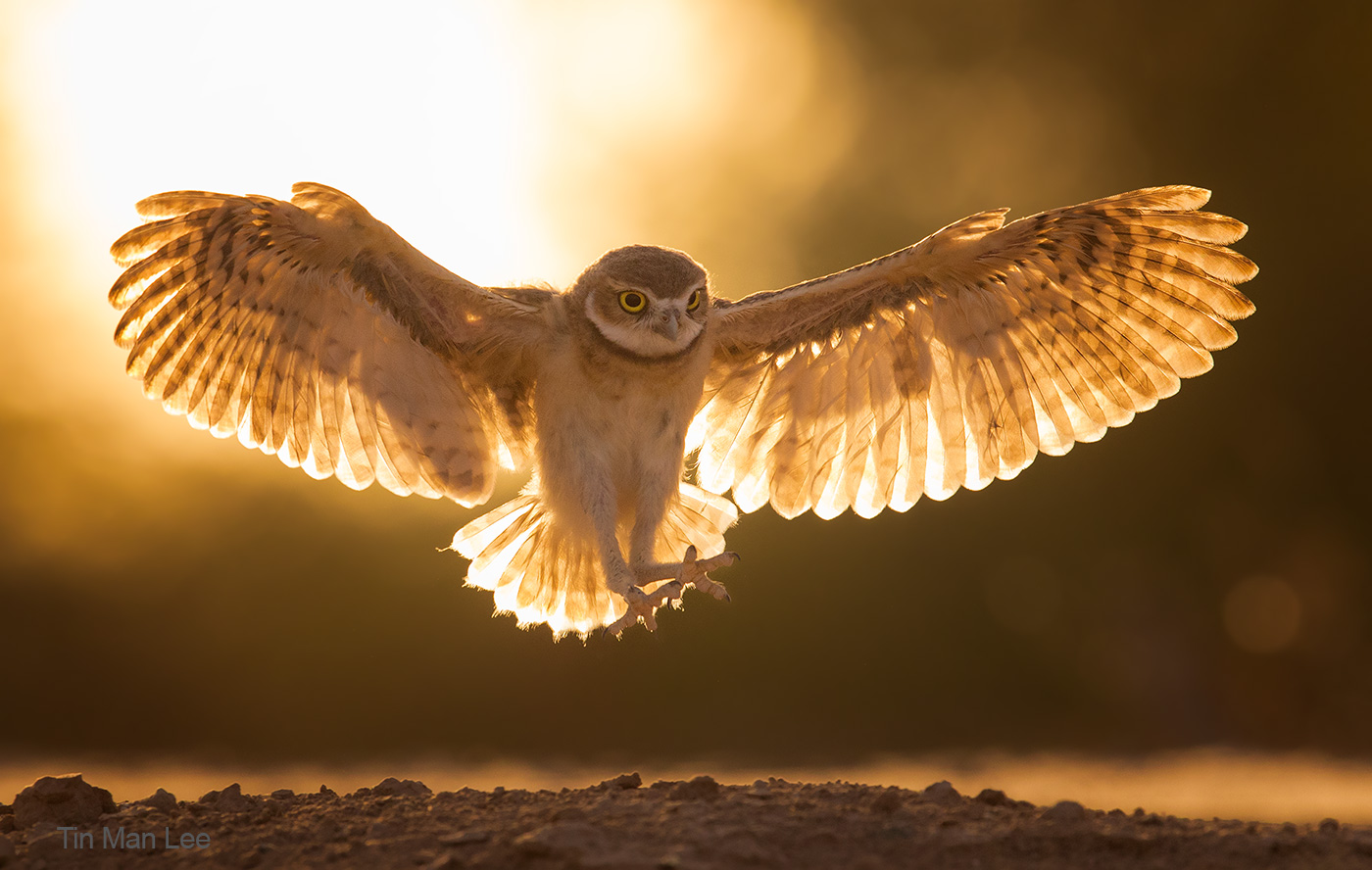
We have seen countless birds in flight photo in direct light. But there's something special about owl in flight in backlight because of their wings, which made them capable of silent flight. I love the abstraction created by backlight because it washed away all the color and turned everything into saturated gold, where my eyes can focus on the texture and translucence. The flight path of owlet was short when they first learned flying, and I was very lucky to get this shot. At first I didn't like the bright spot on the left, but the more I looked at it the more I liked it, it is as if the owl was flying through a light tunnel into this world from another planet.
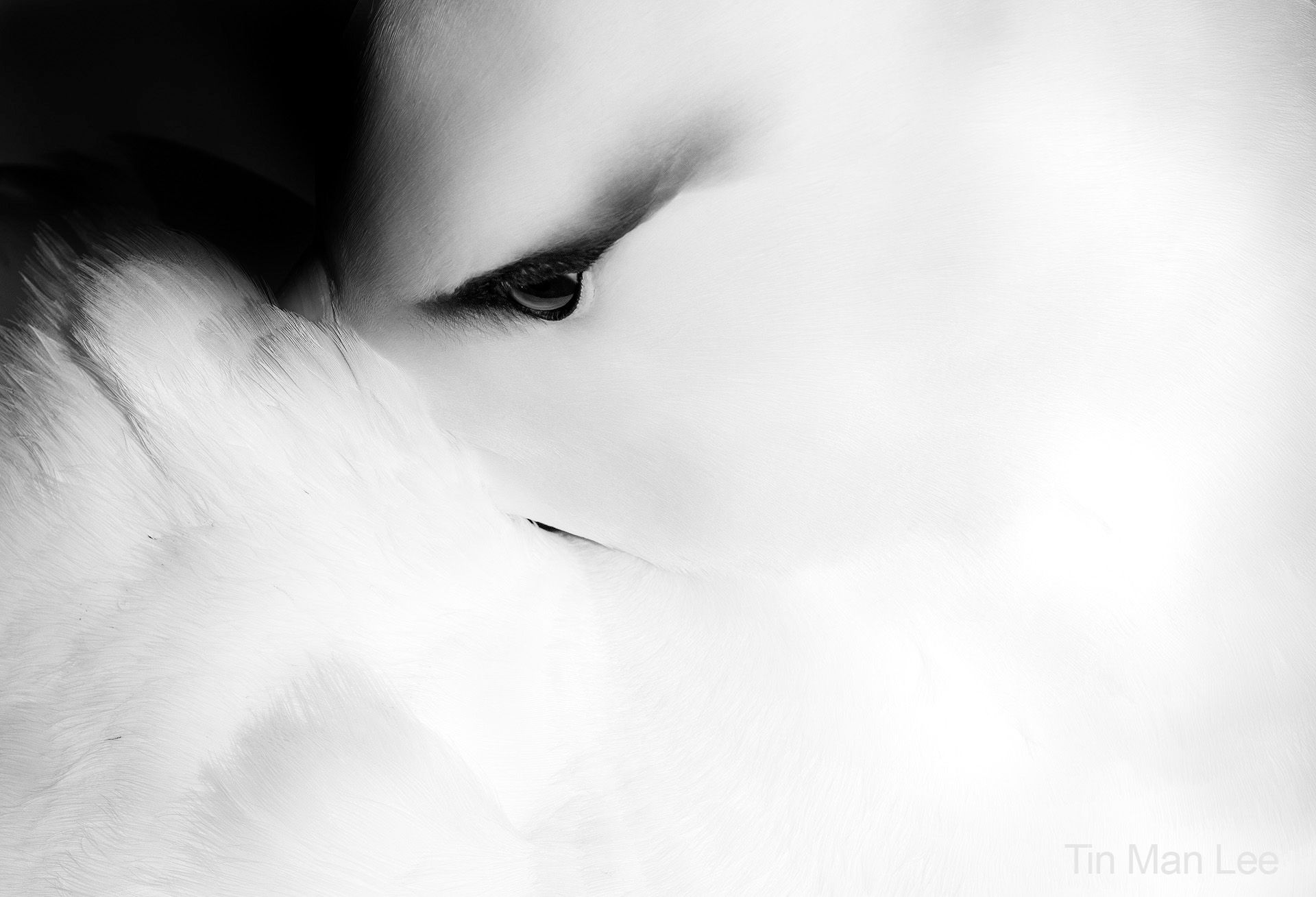
I have been mesmerized by the eyes of the black-browed albatross for a long time. So I was very excited when I finally got to see them in Falkland Islands-- the Saunders Neck. I took thousands of photos but only this one conveyed my feeling towards them, and my respect to them-- a bird that lives 70 years and mate for life, and have supreme gliding capability.
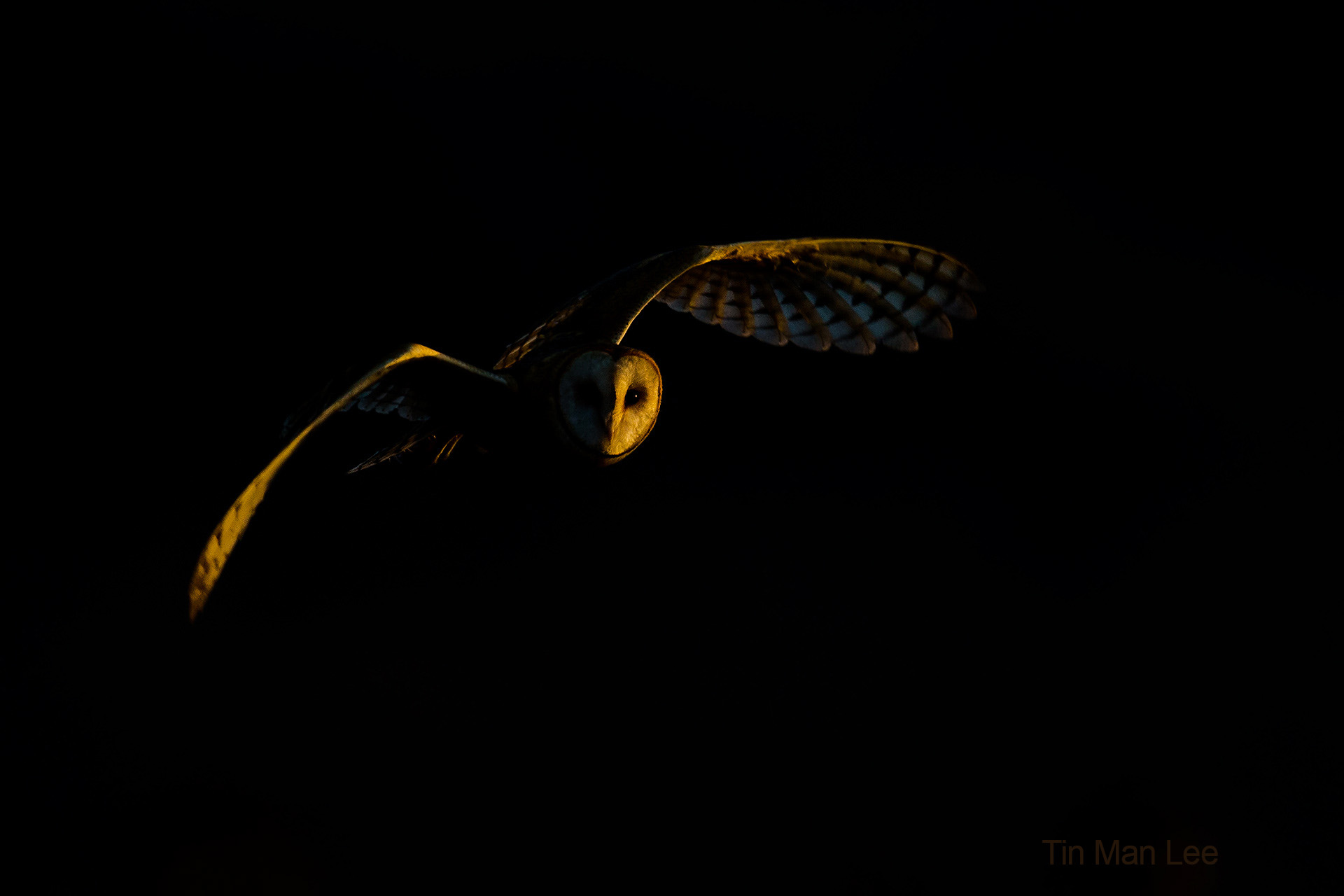
Side lighting can create drama and fear. A predator's face in darkness can make it even more powerful. So I looked for the correct light ratio and luminosity of the background vs the owl and knew I got a special shot when this head turn happened.
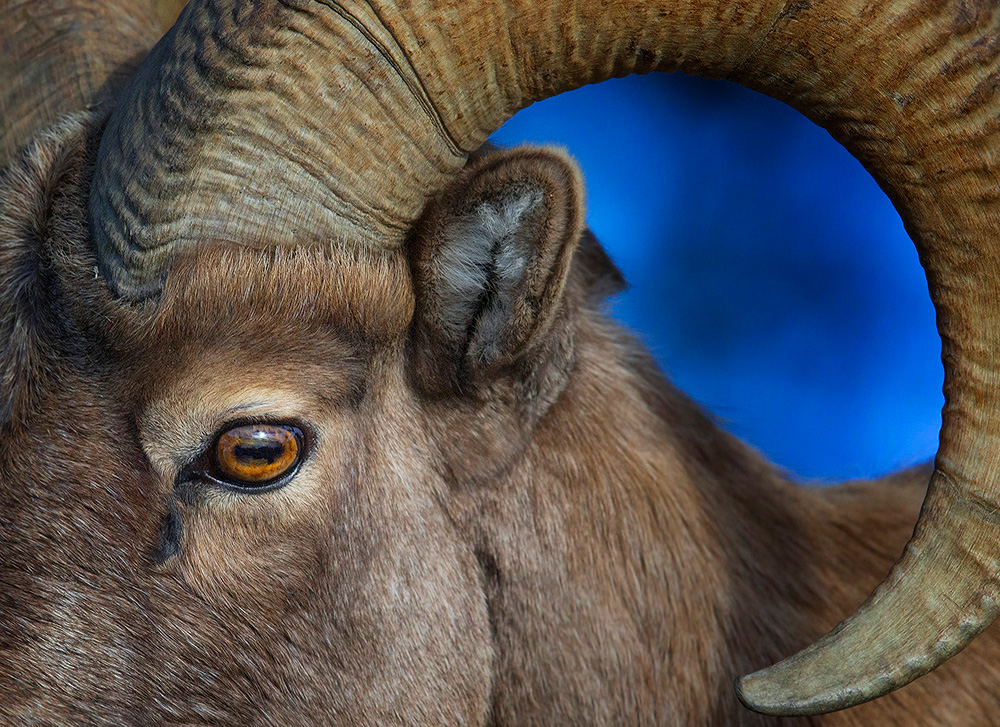
Not many people know, but I absolutely love bighorn sheep, because of a book written by Ernest Seton about them. I have read the story many times when I was a kid. And I always wanted to convey how majestic they are. I knew the potential was in the curl, yet I was never able to find a background color that complimented the shape and the color of their whimsical and deep looking eyes. That particular day, we were photographing three of them from a distance near our car, and I saw a nice background in the distant snow mountain that looked blu-ish. Yet no matter how I changed the position, I could never get the blue to align behind the horn. Suddenly, after half an hour of being completely stable, this guy suddenly ran towards me and past by me in close distance, his eye full of fear, and in the heat of action, I snapped a pic with this blue in the background. Then all 3 sheep were gone. Ten minutes later, a pack of wolves passed by. The sheep must have sensed the wolves coming.
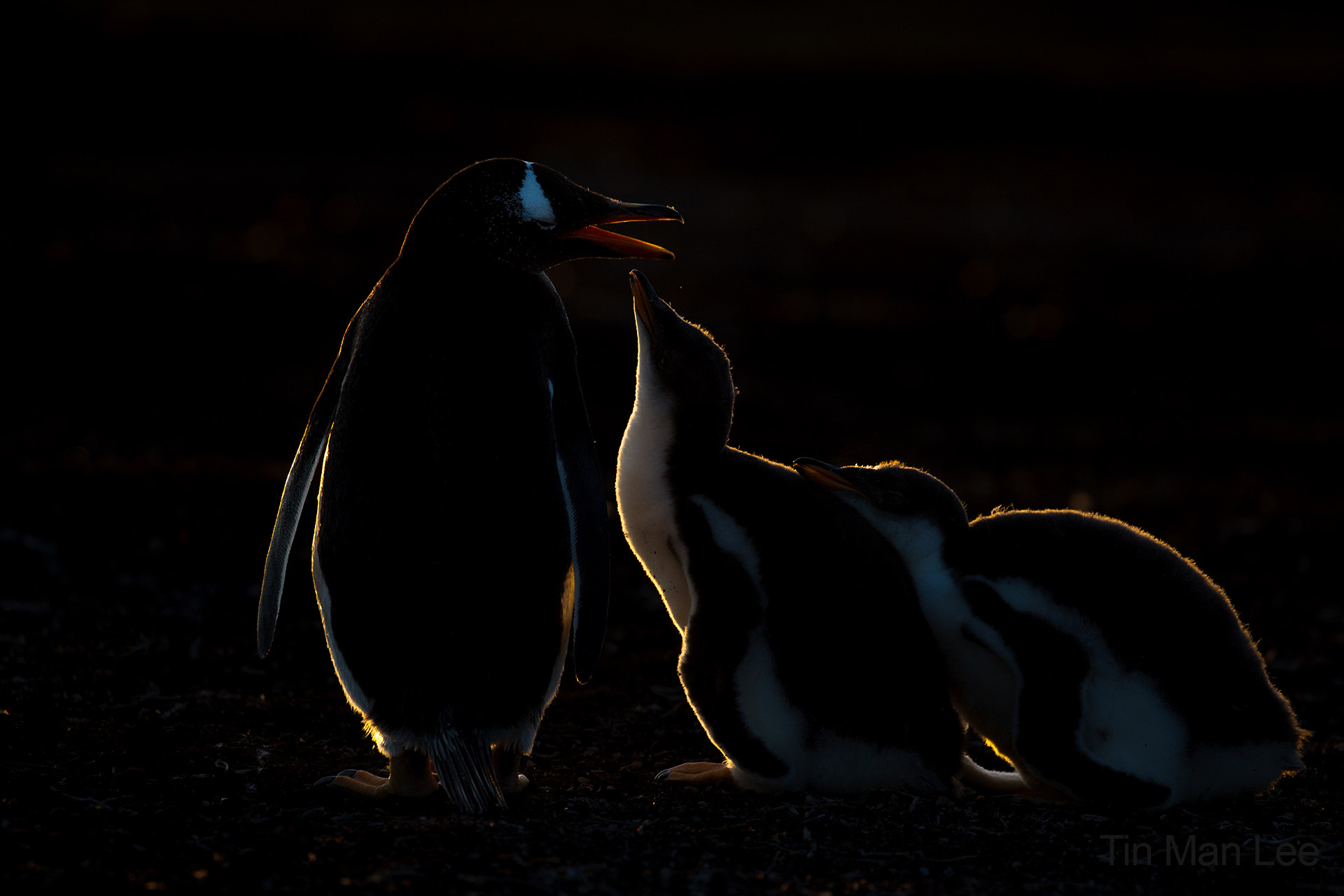
Gentoo penguins go out to the ocean every morning to catch fish. They would come back in the evening to feed the chicks. To convey the last feeding of the day, I found a spot with very dark background, and waited for the last ray of light. Getting an angle where the 3 penguins aligned was very difficult especially when I was near a penguin colony with lots of them running around. I finally caught this moment, and its especially meaningful because my mom was right next to me when I took this shot.
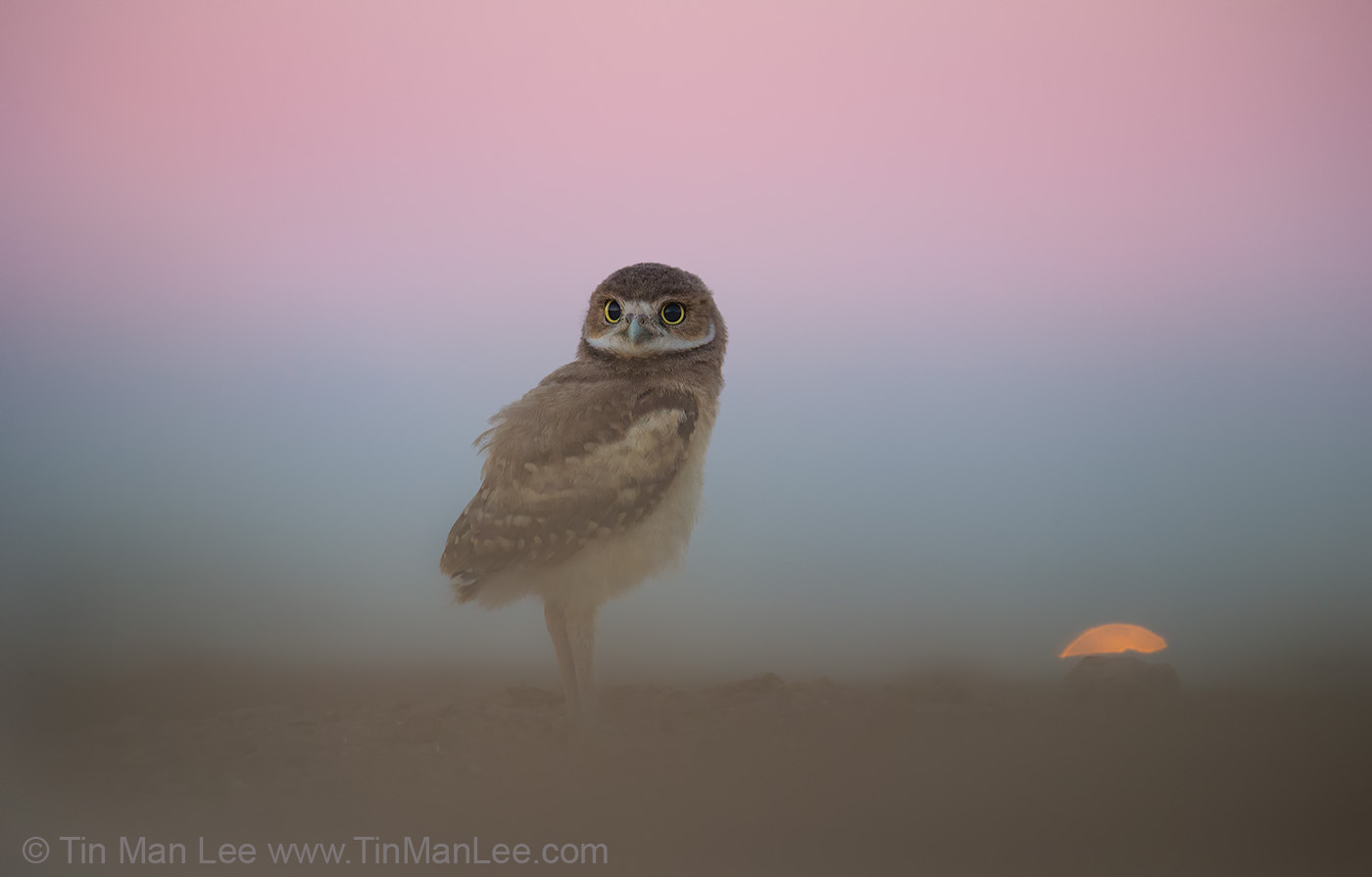
It's not usual to have a pink/purple background when the owlet was active. A sandstorm was coming, and I knew if I got a super low angle, I could blur the lower part of the image to convey a stronger feeling of the sand blowing, and at the same time the purple sky would be in the frame. So I actually pressed the lens all the way down the sand to get this angle.
I hope by now you know what I meant by asking yourself this question.
Don't just fire away to get some documentary shots when an animal shows up. Think. And feel.
Of course, the "four" other photographers will still get some photos of the animal if they are going with me, but chances are our photos will be quite different, because I would try to walk to a spot that's not typical, or move around so the perspective is more unique.
So let's do it. Why don't you take a look at your ten recent photos, and ask yourself this question,
"If 5 people went to this same location and were given this opportunity, will my photo look the same as theirs?"
Did you pass the test?
No?
My advice: Delete all those photos. Because there are way too many similar pics out there, and no one will care.
JUST KIDDING.
Don't get me wrong. It is still very nice to capture a great moment in sweet light with creamy background.
But let's be brutally honest. There ain't much creativity in it.
We can all "nail" a picture in the same situation, but this extra ingredient in the thought process should help you create something more unique.
You'll be amazed, as you just have a new pair of eyes.
In my upcoming free webinar in August 2017, I will go in more details about creativity and other techniques. Make sure you sign up my newsletter below to receive the webinar info. Seats will be very limited this time as I am switching to a new webinar software that's more stable, but they charge me more for the number of seats. You can sign up for my newsletter below by entering your name and email below and click "Subscribe!".


“True. I really liked the photos I took alongside him. But he’s the first one to see that angle and composition, and I should give him credit for that.”
Let me comment on the above statement. It is true, that your friend may have found the scene first, but…
Perhaps your skill as a photographer is better/different than his.
Perhaps your photographic style is different than his.
Perhaps your aperture was wider or narrower than his.
Perhaps your shutter speed was faster or slower than his.
Perhaps your composition was slightly or greatly different than his.
etc., etc.
The two pictures may be similar, but they probably would not be the same. Every photographer brings their vision to the moment and that helps them render their version of the scene. Add post processing to this and a wide variety of different skills , styles and visions thus enters the scenario.
Sharing the same scene, moment, subject is not a negative thing. I am sure you have been to workshops where several people took pictures of the same thing yet some were “Wow” and others were not.
I have seen hundreds of pictures of Tunnel View at Yosemite and many of them were near duplicates taken in different years and yet there were a few that stood out above the rest even though they seem to have been captured at the same spot.
So…give credit for finding the subject, but lets not sell ourselves short for our vision and perhaps our different, creative capturing of the moment.
As a side note — I was hiking along one of the trails at Sequoia National Park and a Yellow-bellied Marmot came out from behind a rock no more than five feet from me. When I hike, my camera is always at the ready so I was able to capture several very sharp, close shots of this curious rodent. Another hiker coming in the opposite direction came across the scene, but took too long to ready his camera and he missed the shot. I felt like you did, i.e. he was there just as I was and he saw what I saw, but he had no picture. I gave him my email and offered to send him a copy.
Enough said!
Thank you very much for your comment, J. Ross. I agree with you whole-heartedly, indeed, I didn’t explain clearly in my first draft and your points made it much better– very true, we sometimes are stuck as a group, at times due to the safety (polar bear, brown bear trips), at times due to the way of transportation (in a small boat), and the viewpoint would be the same, but for this, I have been trying to focus on trips where I can roam more freely, such as the Falkland Islands, because, I agree with your points that the skill, style, depth of field, shutter speed can vary, but the light angle, eye level or not, and the distance relative to the animals can’t be changed much and it limits the creativity, of course one can still create very unique shots when in those situations. But I think we are on the same path. It’s really about how much of the personal touch you give to your photos. And like my previous post, I always think that the degree of difficulty should play a role in wildlife photography too. Thanks for your comment.
Hi Tin Man,
Regarding the purplish and pinkish bands in your last image of the burrowing owl: these are regularly occurring sky colors that most photographers miss because they stop shooting too early in the evening or start shooting too late in the morning. They occur when the sun is just below the horizon (behind the photographer)–just before sunrise or just after sunset. The bluish band is the earth’s shadow projected on particulates in the atmosphere. The pinkish band is trays of the sun illuminating the atmosphere above the shadow; this pinkish band is called The Belt of Venus, Venus’s Girdle, twilight wedge, or antitwilight arch. The light gets its sunset/sunrise color by passing at a low angle through so much low-level atmosphere. It is similar to Alpenglow. The nice thing about these bands is that they happen commonly if you have the oomph, patience, and persistence to start shooting before sunrise and to keep photographing just after sunset. These bands are especially visible in the flat desert, and don’t need an approaching sandstorm to develop. They are one of my favorite parts of photographing in wide open spaces.
Tin Man outstanding post again…very thought provoking….and thank you John Cubit for your explanations….I am with you on this…the colors can be unimaginable. a favorite time of mine to shoot…….I now know the names of the bands that I in the past simply call beautiful
Thank you Steve! Hope you have a fantastic trip to Alaska next week. You probably won’t be seeing much of the purple sky with the 24 hour sun there, but u never know.. maybe u will get lucky at 2am.
Hi John, how nice to have an expert here to explain to me the formation of the purple sky, and all the beautiful names associated with it. Much appreciated. I need to refer to your comment from time to time before I go out in dawn and dusk to get remind myself. With the capability of low light in many new cameras nowadays, the potential is limitless to capture those moments when, as u said, one has the patience, oomph and persistence. Thank you!
Great piece of writing Tin Man.
till six months ago…. I never used to spend much time in thinking before clicking the shutter (except ensuring sun light is falling on the subject.).. i was always in a hurry to get the subject in the frame and fire away……
Of late I realised, only thing that matters is to get a different and better shot than what I have taken earlier.. which essentially means spending more time with myself before clicking the shutter , even at the risk of loosing the shot altogether…
Glad you like the blog, Anil. Yes, we all strive to get the shot with the right light angle in the beginning, but the fun doesn’t begin until we mastered it and moved onto the more creative stuff. Yay!
Thank you for sharing! Much inspiring.
Thank you, Elisabeth!
Really fantastic and thought provoking blog. Last time when I tried to come up with 25 images to submit to a contest, I couldn’t get past a dozen and in fact I really liked just a few. The issues I find is that most of these images are just ordinary grab shots like you said. Two that I like provoke special moments of interactions between a cheetah mother and cubsandbclose up portrait of a Burrowing Owl in the sweetest of light with the rising suns reflected in the owl’s eyes. Out of the many thousands of pictures I have taken on Africa safari, I only got one that evokes emotion in the viewers. So you need to be luvky, but more importantly you need to put yourself in a position to be lucky. We spent two days following this cheetah family and her four cubs forme to snap a special moment when one of the cubs jumped up, put her front paws around Mom and gave Mom a kiss. I spent several years visiting the same family of owls to finally had the opportunity when one of the pellet landed on a low branch not 5 yards from me in the sweetest of light of the rising sun. But the BG was a dirt road and a sign post. Only by moving myself 2 feet sideways that I could align the owl with the most beautiful BG of a distant tree. The compliment so often hear from people is “Did you photoshop it?” So for me, documentary is good only if it is for special moments. You need to go beyond that to look for a unique thing, whether it is light, geometric patterns, or abstraction to evoke emotion. Be quick to recognize the patterns or light as they happen only in fleeting moments. And be at the right place at the right time and shooting angle or else you won’t see it. It was amazing to me that you and I spent a good chick of time shooting together last Summet and rarely our two pictures look similar! I learned a lot from you already, so thank you!
Thanks Loi. I am glad to share that moment with you when you got the close up sweet light shot of the owlet. We both know how rare and short that golden morning light was. I’m glad you like the blog and we will talk more soon. Thanks for sharing the story of the cheetah family.
Great post Tin Man!
Thank you very much for your kind words, Tom. How nice to have the grandmaster stopping by. Your iconic original shot of the bear with the salmon flying in the mouth set the standard and has inspired us new photographers to learn. Wonderful to have a nice chat with you in Grand Teton some years ago!
Are your photographs for sale ?